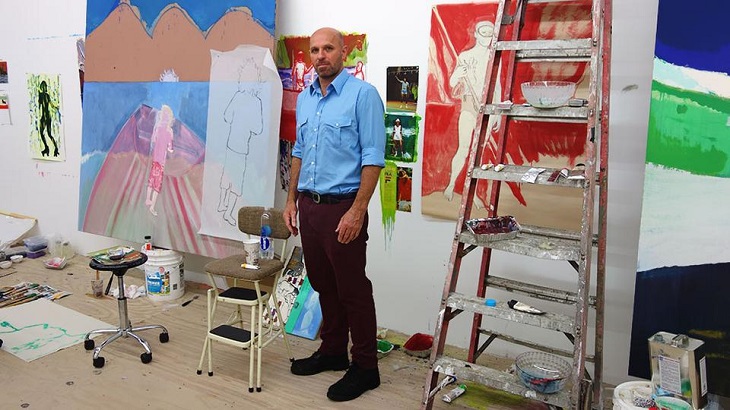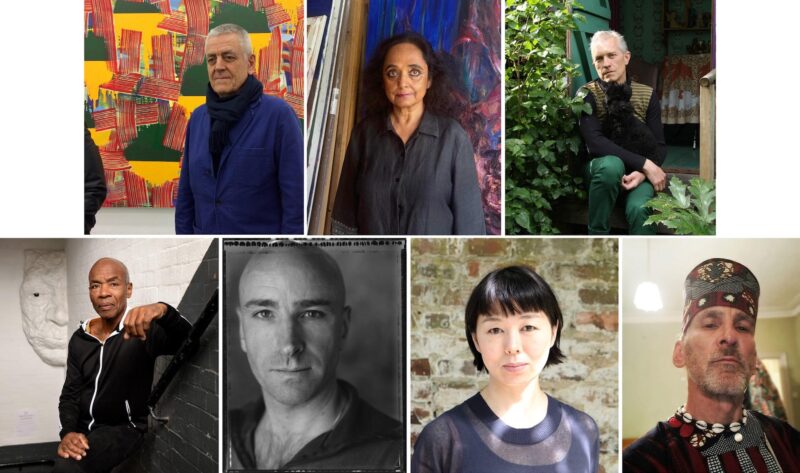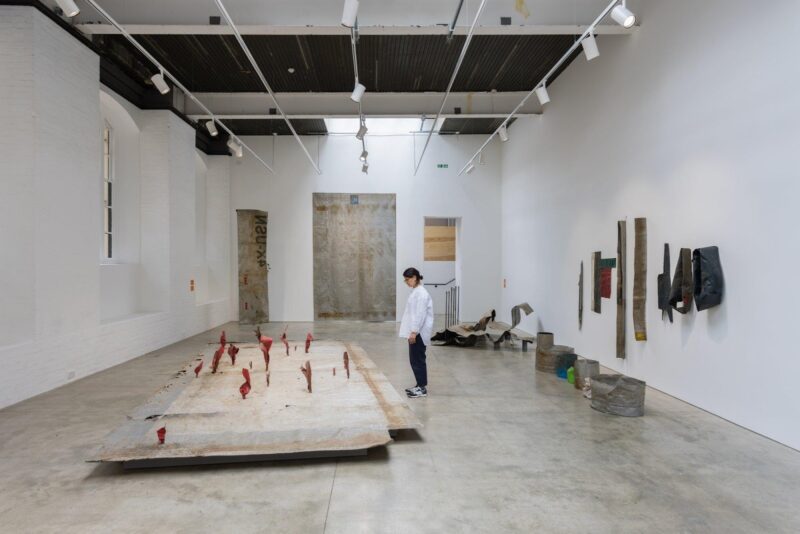
Artnet has published its list of the top ten most expensive living British artists at auction for 2015. The list betrays a gentle change in the current of British art, revealing a market less interested in ostentation than it is in aesthetics and meaning. The big surprise is the long-awaited removal of Damien Hirst from the number one slot, which can only mean the party is finally over.
The list is comprised of the ten highest value lots by a single artist sold at auction in the decade from 2005 to 2015. There are some surprising – and welcome – changes from last year including the addition of Chris Ofili, whose presentation at Venice turned a few heads for his striking change of direction, at number seven. He finally made the grade when his infamous The Holy Virgin Mary sold for $4,532,945 at Christie’s. Also, after the epic sale of My Bed, Tracey Emin, whose secondary market was patchy before Saatchi started having a clear-out, makes it in at number eight. Alongside the movers and the shakers, there are also the steady eddies who will not budge positions: Antony Gormley, Glenn Brown and David Hockney retain their places from last year at numbers five, three and four respectively.
Holding the number one spot for the first time is Peter Doig, whose Swamped sold for $25,952,000 at Christie’s New York in May. He has finally knocked Hirst into second place after two failed, but close, attempts during summer auction week last year: at Sotheby’s Country Rock (Wing Mirror) realised just $14,400,000, while only a few days later at Christie’s Gasthof sold for $16,984,897. Hirst’s record is $19,230,922 for Lullaby, Spring at Christie’s London in 2007, propelled by the sale of Lullaby, Winter a few weeks earlier to a buyer who didn’t pay.
The landscape of the art market has changed when you consider that Hirst’s top selling work in 2007, at the ecstatic pre-crash peak of the market, was a polished stainless steel cabinet filled with 9000 immaculately crafted hand-painted pills. After the exuberance and bling of the boom years, Doig represents an altogether more sober taste. Doig’s paintings are mysterious, complex and evocative; they are also highly prized and coveted, but they are not bling or trendy or decorative in anything like Jerry Saltz’s Zombie Formalism sense. Indeed, they are almost classical in their commitment to using painting as a vehicle for the evocation of narrative and expression. They do not even try to be clever; they just depict people and scenes in a seductive style that invites the viewer to explore a world.
The fact that buyers are willing to pay a premium for this above all other British art speaks volumes: the boom years, characterised by throwaway ostentation and shallow conceptual gestures, are behind us. Now we are ushering in a time of quiet reflection on the aesthetic power of art to move and shake, not the market, but the human spirit. Doig is very famous and very expensive, but he is also a ‘real artist’ in the sense that the Daily Mail bemoans the loss of: he paints pictures, holed up in his studio, with his own hands. Although this vision of the artist is outdated and inapplicable to much contemporary art of the last hundred years, which is why it is normally so useless a confection, it captures Doig’s current appeal for the market.
When you consider art in purely aesthetic terms, without the noise of the market or of artists, collectors or gallerists, you realise aesthetics, as Kant said, has to be universal in order for it to be meaningful. That is, not everyone gets geometric abstraction, even if it is very good and very beautiful like Mondrian, but everyone gets a picture of a canoe on a still lake because it speaks the universal language of figuration. And the language of painting, although not universal, is timeless, well-entrenched in our culture and has a purity that speaks to the human soul like nothing else. This does not mean we should eschew everything that is not figurative painting – for that would eliminate the conceptual richness of the spectrum of contemporary art – but it does mean that we should recognise its place in visual culture.
It comes back to painting precisely when the thrilling developments in art history have alienated swathes of people with conceptualism, abstraction and new technologies, about which people disagree vehemently while hardly anyone disagrees about good figurative painting. This is precisely because the universal aesthetic sense operates to unite people, while contemporary art’s mandate is to divide people. So perhaps the market’s change of taste here is an attempt by the most divisive spectre in the artworld to unite aesthetic sensibilities once again.
The point is that the most enduring aesthetic sensibilities are the universal ones, and that is what the market – as well as the rest of us – will always default to when we sense that art has become difficult, alienating, expensive or boring. The current trend for the likes of Oscar Murillo and Christian Rosa, messy paintings with heavy but astonishingly superficial conceptual backstories, or the current obsession with archives, or the insipid cacophony of video art, all just drive us back to the likes of Doig.
The art market bubble continues unabated, with plenty of cash to splurge, but the great change is how the cash is being splurged: no longer bling and spectacle, but real art, something that looks and feels more like the fine art that everyone understands and enjoys. Even the inclusion of Emin for the bed speaks of a concern in buyers for art history, for the preservation and custodianship of treasures, rather than the selfish drive to acquire riches. The party is finally over and the art market is suffering the most colossal hangover, so rather than a hair of the dog champagne, it reaches for Doig, that refreshing, comforting, timeless cup of tea.
Words: Daniel Barnes







